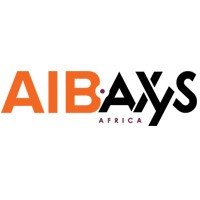The Energy and Petroleum Regulation Authority (EPRA) reviewed the maximum retail prices of super petrol, diesel and kerosene upwards by KES 5.50 per litre to KES 150.12, KES 131.00 and KES 118.94 respectively. The Government continues to utilize the Petroleum Development Levy to cushion consumers from these higher fuel prices which currently stand at KES 176.47, KES 174.94, KES 118.94 for super petrol, diesel and kerosene.
Banking sector Q1’22 results showcased a general improvement in performance compared to Q1’21 mainly backed by increased interest revenues from investment in Government securities and loans coupled with reduced loan loss provisioning. Additionally, the banking sector continues to remain stable and resilient, with strong liquidity and capital adequacy ratios. However, we continue to remain concerned about the increasing NPLs especially from manufacturing, trade, transport and communication sectors that continue to weigh down on banking the growth in the banking sector.
The MPC held the third meeting of the year on 30th May 2022, raising the Central Bank Rate (CBR) by 50bps from 7.00% to 7.50%. The tightening of the Monetary Policy comes at a time where there is elevated risks to the inflation outlook stemming from the surge in global commodity prices and escalating supply chains disruptions.
Stock market poor performance intensified with the Market Capitalization declining 14.30% in May due to the ongoing foreign investor selloff that continues to persist as foreign investors flee to invest in ‘safer’ havens backed by the increased target range for interest rate by the FED from 0.00% to 0.50% to the new target range of 0.75% to 1.00%. The NSE 20 and the NASI recorded downward m/m trends of -6.60% and -13.60%, contributing to the market weakness.
Inflation rate for May 2022 was 7.10% compared to 6.47% recorded in April 2022. The Food and Non-Alcoholic Beverages Index (12.40%), represented a slower growth of 1.30% compared to 3.03% registered between March 2022 and April 2022.; Furnishings, household equipment and routine household maintenance(7.90%); Transport(6.40%); Water, Electricity, Gas and Other Fuels(6.00%).
Kenya shilling continued to depreciate against the USD, loosing 0.83% on m/m basis. On a YTD basis, the shilling has depreciated 3.18% against the USD compared to 3.64% in 2021. This is mainly attributable to increased dollar demand on the back of elevated global oil prices, high demand for imports, reduced earnings from agriculture and horticulture as well as the slow recovery in the tourism sector.
What does June hold?
The Russia—Ukraine war is expected to continue having adverse effects on emerging and frontier equity markets as investors seek ‘safer’ investments away from these markets. The recent raise of interest rates by the FED continues to cause investor selloff as the advanced markets are perceived as more attractive. Rising global energy, commodity prices, and disrupted supply chains will affect the local prices of fertilizer ahead of the planting season, which will negatively affect agricultural productivity and food inflation in the coming months.









